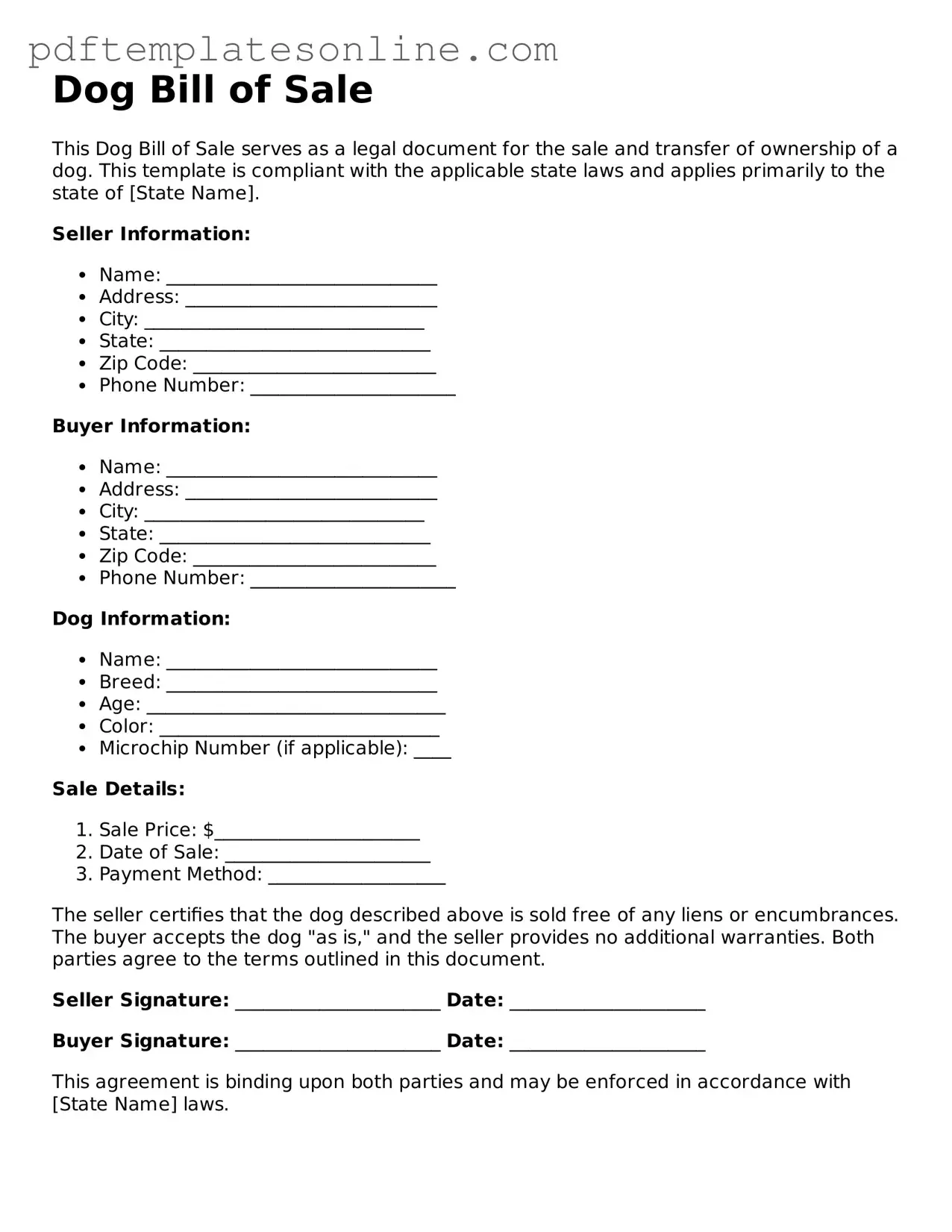When completing a Dog Bill of Sale form, individuals often overlook critical details that can lead to confusion or disputes later on. One common mistake is failing to provide accurate identification for both the seller and the buyer. This includes names, addresses, and contact information. Missing this information can create challenges in establishing ownership or contacting the parties involved.
Another frequent error is neglecting to include the dog's specific details. This encompasses the dog's breed, age, color, and any unique markings. Without these identifiers, it becomes difficult to verify which dog is being sold, potentially resulting in misunderstandings.
Some individuals mistakenly assume that a verbal agreement is sufficient. However, a written document is essential for legal protection. Relying solely on verbal promises can lead to disputes if one party does not fulfill their obligations.
Additionally, many people forget to indicate the sale price clearly. This omission can cause complications in the future, particularly if there are questions about the transaction or if the buyer needs to prove ownership for registration or veterinary purposes.
Another common oversight is failing to include any warranties or guarantees regarding the dog's health. Buyers often appreciate knowing if the dog has been checked by a veterinarian or if there are any known health issues. Leaving this information out can lead to mistrust and dissatisfaction.
Moreover, people sometimes neglect to sign and date the form. A signature is a crucial element that signifies agreement and acceptance of the terms outlined in the document. Without it, the bill of sale may not hold up in a legal context.
In some cases, individuals may not keep a copy of the completed form for their records. Retaining a copy is vital for both parties, as it serves as proof of the transaction and can be referred to in case of future disputes.
Another mistake is not including any transfer of ownership clauses. It is important to clarify that the buyer assumes all responsibilities and rights to the dog upon completion of the sale. This helps to avoid any confusion about ownership after the transaction is finalized.
Lastly, many people overlook the importance of including a statement regarding the return policy or conditions under which the dog can be returned. This can provide peace of mind for both the buyer and seller, ensuring that there is a clear understanding of what happens if the arrangement does not work out.
